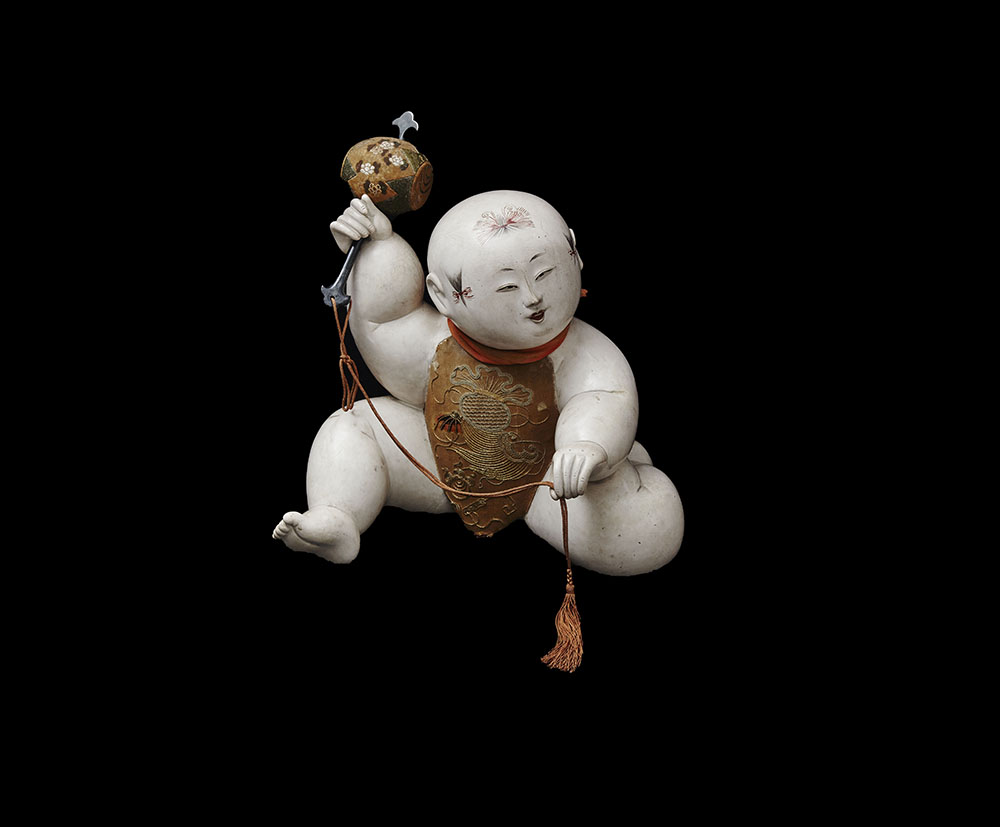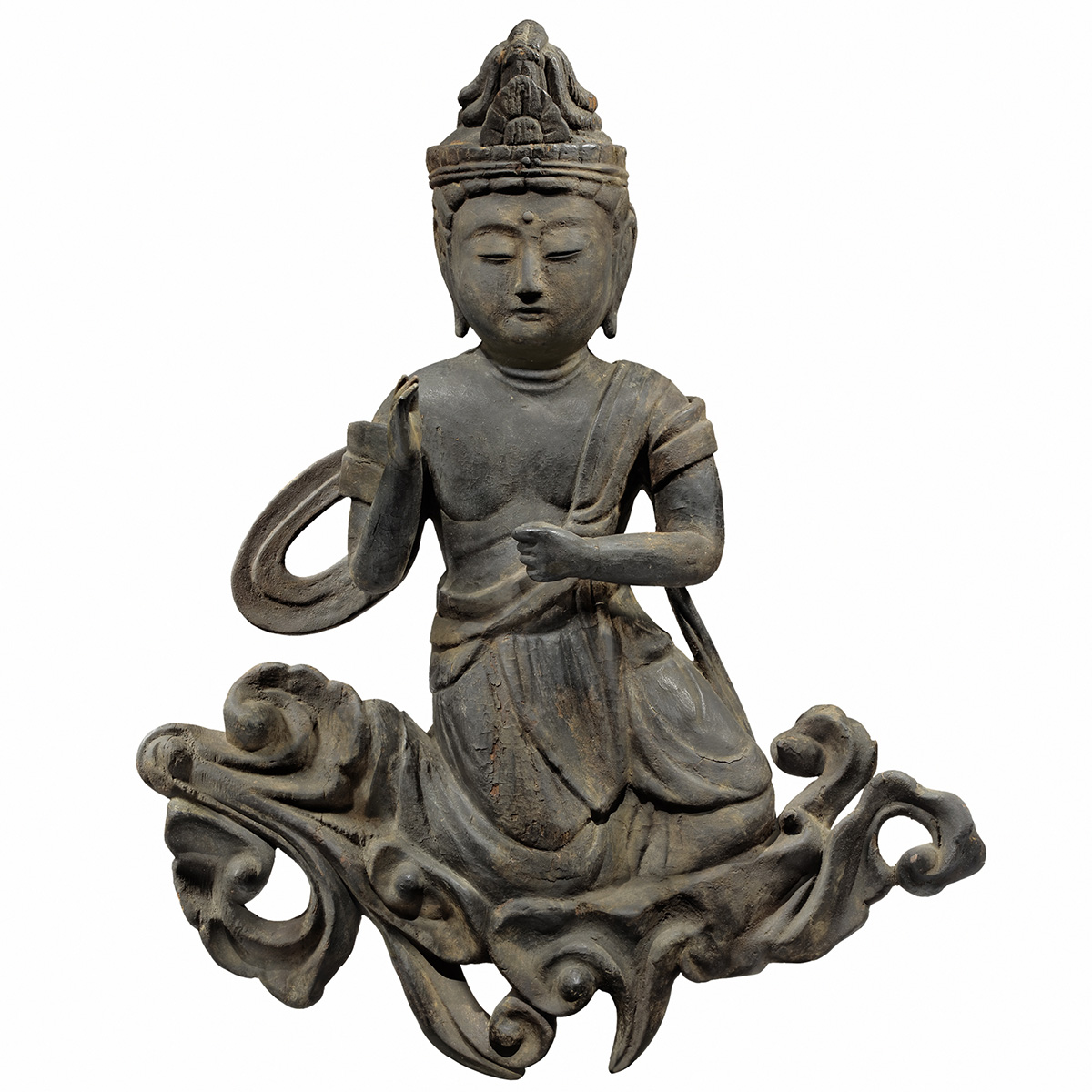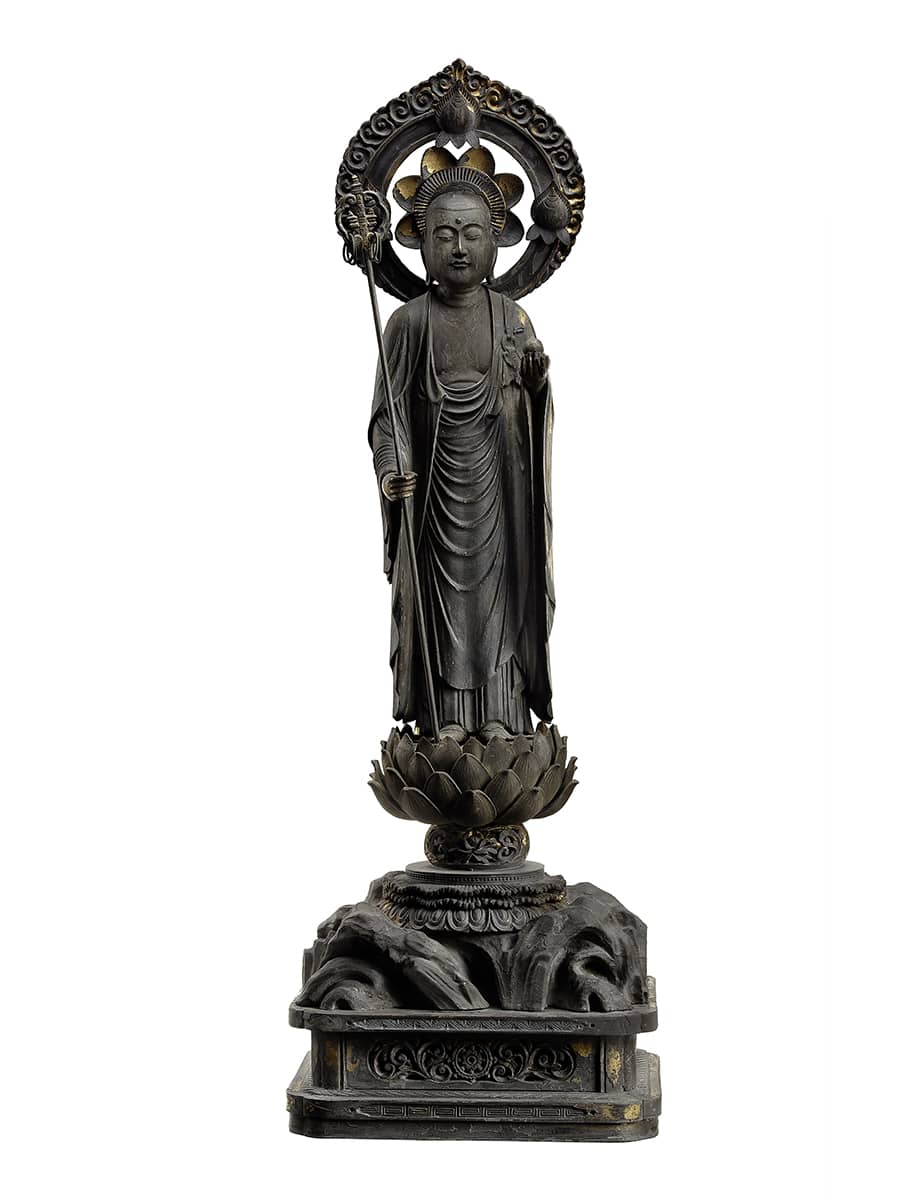Gosho-ningyō
Statuary
- Contact Us
-
Material
Lacquer (gofun) on wood, silk textile
-
Size
H. 37 cm
-
Period
Edo period, 18-19th century
Description
Gosho-ningyō, Imperial palace doll
Gosho-ningyō means “Imperial palace dolls,” the origins of which are based in the gift exchanges between the imperial court (imperial family and court nobles) and the daimyō (feudal) lords at the beginning of the 18th century.
The feudal lords were required to spend every other year in residence in Edo (modern-day Tokyo), according to the rule established by the Tokugawa shōgunate. It was required that the lords change their residence, alternating between their feudal estate and Edo. The lords in the west of Japan who had to pass through Kyoto on their way to Edo would visit the imperial court to pay respects to the emperor and the court nobles. By the end of the Edo period, the tradition of gift exchanges involving gosho ningyō had spread to the general public. The doll is usually depicted as a plump child figure with brilliant white skin and refined, elegant face, like a noble. Auspicious motifs are often included as part of the decoration of the doll.
This plump child is waving a mallet over his head. He is wearing a bib as underwear, which is embroidered with traditional treasure motifs in gold thread. The mallet itself is also an auspicious treasure symbol, associated with Daikokuten, the god of wealth.
There is also a kimono and a hood associated with the doll.
The condition of the doll is excellent, and the textiles are also well preserved, considering their age. The large size of the doll is appropriate for the celebration of special events. His lovely smile will surely bring good luck.


